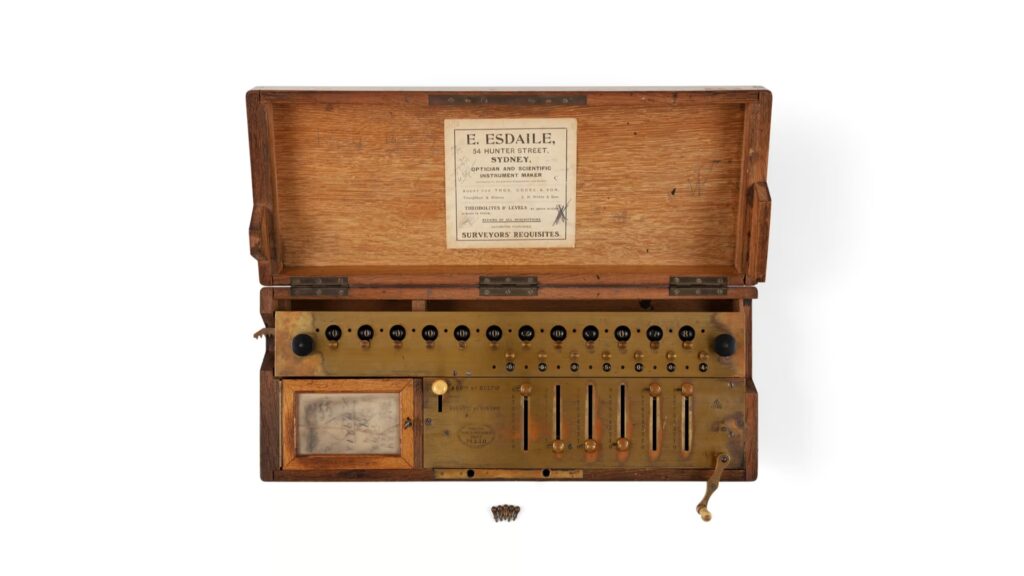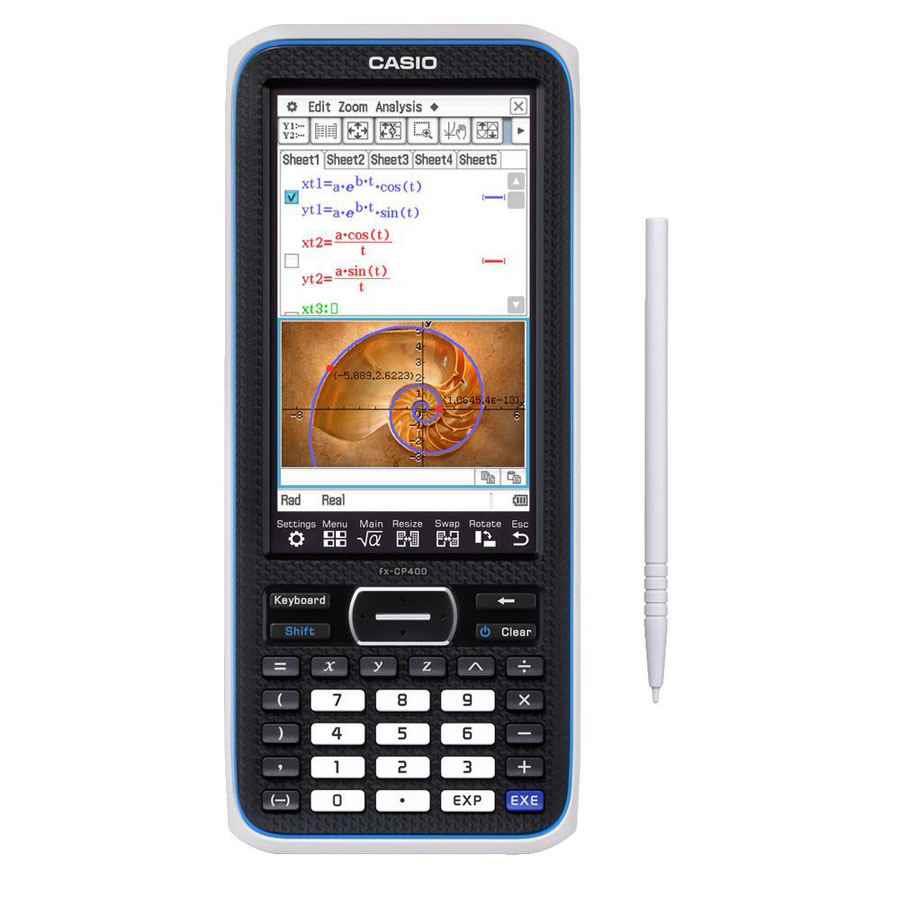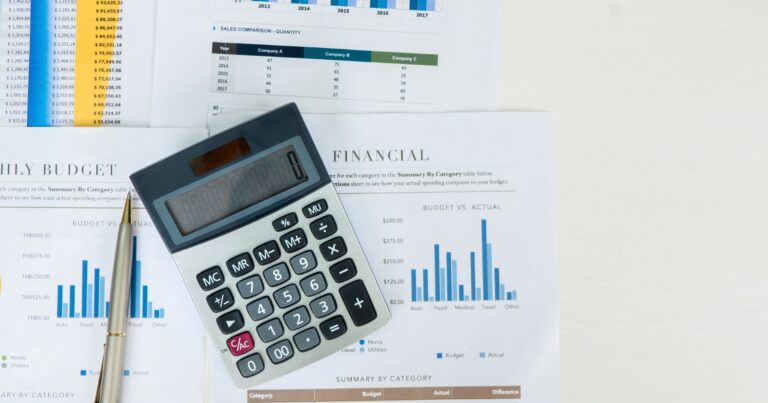What is a Calculator?
A calculator is an electronic or mechanical device designed to perform mathematical operations quickly and accurately. All calculators can handle basic arithmetic tasks such as addition, subtraction, multiplication, and division, and specialised calculators can perform more advanced functions ranging from algebraic calculations to graphing equations or working out future return on investment.
As a rule of thumb, all calculators have a similar makeup, comprised of buttons featuring numbers and mathematical functions ranging from simple to complex depending on the model of machine being used.
Calculator History
Electronic calculators may be a relatively modern invention, but calculating machines date back thousands of years, beginning with simple devices like the abacus, used by ancient Romans as early as 500 BCE.
The abacus allowed people to perform basic arithmetic by sliding beads along rods, wires, or grooves, enabling them to quickly perform basic mathematical tasks and work out fractions. Abacuses remained in use for centuries, especially in Asia (where some people still use them), and laid the groundwork for future calculating tools.
In the 17th century, mechanical calculators were invented. After a few false starts and promising designs that ultimately proved unworkable, the first commercial mechanical calculator was by French mathematician Blaise Pascal in 1645.
Named the Pascaline, the machine could add and subtract. The Pascaline was also portable, so it could be moved from place to place. Unfortunately, while impressive, the Pascaline wasn’t a massive success thanks to the price. The Pascaline was sold for around 600 livres. In today’s money, that’s nearly $18,000 AUD.
The first commercially successful calculator was designed around 200 years after the Pascaline. The Arithmometer, a mechanical calculator invented by French inventor Thomas de Colmar in the mid 19th century was capable of fast and efficient multiplication and division as well as addition and subtraction. For decades, between 1851 and 1890, the Arithmometer was the only mechanical calculator commercially available, selling around the world for between 250 and 500 francs depending on the model, and creating the calculator industry.

The 20th century saw the development of the desktop calculator, with the first mass-produced model, the Comptometer, released in 1887. It wasn’t until the 1960s and 1970s that electronic calculators became widely available. Texas Instruments and Casio were pioneers, launching the first pocket calculator in 1970, making calculators portable and accessible for everyday use.
Specialised calculators soon followed. The scientific calculator, first introduced in the early 1970s, could handle advanced functions like trigonometry and logarithms, essential for engineers and students. The tax calculator, designed for businesses, simplified accounting by incorporating tax rate functions. By the 1980s, the graphing calculator was developed, capable of plotting graphs and solving complex equations, revolutionising mathematics education.
Types of Calculator
While all calculators can perform basic mathematical functions, there are multiple different kind of calculators available with specialised features.
Pocket Calculators
First developed in the early 1970s, pocket calculators revolutionised how people performed calculations by making it convenient to carry and use calculators anywhere.
Pocket calculators typically feature a compact keypad and a digital display screen for showing results. While most pocket calculators handle basic arithmetic, many models also include functions for percentages, square roots, and memory recall for storing results. Some advanced versions can handle more complex calculations like trigonometry and logarithms, though they are still small enough to fit in a pocket.
Because of their portability and ease of use, pocket calculators are widely used by students, professionals, and anyone needing quick access to calculations.
Desktop Calculators
A desktop calculator differs from a pocket calculator mainly in size, functionality, and purpose. Desktop calculators are larger, designed to sit on a desk for extended use in professional settings like offices, accounting departments, or retail counters. Their larger size allows for a more spacious keypad, making data entry easier and quicker, which is particularly useful for those performing repetitive or complex calculations.
Scientific Calculators
A scientific calculator is designed to perform a range of advanced mathematical and scientific calculations, beyond the capabilities of basic calculators. Its primary functions include handling operations in algebra, geometry, trigonometry, and calculus.
Scientific calculators can manage complex equations involving exponents, logarithms, square roots, and trigonometric functions like sine, cosine, and tangent. This capability makes them essential in fields such as physics, engineering, and higher-level mathematics.
One of the key features of a scientific calculator is its ability to input and display multi-step equations, helping users manage complex calculations without needing to break them into simpler steps. Many models come equipped with memory storage functions, allowing users to save results and recall them later, which is especially useful in solving multi-part problems.
Advanced models often include additional functions like statistical analysis, probability calculations, and sometimes even graphing abilities, although graphing is more commonly found in graphing calculators.
Scientific calculators are used in educational settings to assist students with math and science coursework, while professionals in technical fields rely on them for accuracy and efficiency. By automating challenging calculations, these calculators reduce error and save time, making them invaluable for both learning environments and professional use.
Graphing Calculators
Graphing calculators can perform the functions of regular and scientific calculators but with the added capability of showing mathematical equations and functions graphically. These calculators enable users to input equations and view their corresponding graphs on a built-in screen, helping users understand complex relationships visually, an ability that can be vital for higher-level math, engineering, and science applications.
Graphing calculators typically have capability of handling advanced functions such as calculus, trigonometry, and matrix operations. Most models of graphing calculator also support statistical calculations and probability distributions, two functions invaluable for data analysis in fields like physics and economics.
In addition, graphing calculators usually have large memory capacities, allowing for the storage of multiple functions, equations, and data sets, and many models enable users to plot multiple graphs simultaneously for comparison.
Graphing calculators are used extensively in educational settings, especially in advanced mathematics courses like calculus and algebra as they can greatly benefit students by providing a visual approach to problem-solving, allowing users to experiment with changes in equations and observe immediate effects on the graph.
Outside the classroom, professionals in fields such as engineering, finance, and scientific research rely on graphing calculators for accurate and efficient data analysis, making them an essential tool for both educational and professional applications.

Tax Calculators
A tax calculator, sometimes also referred to as business or financial calculators, are a specialised tool designed to help with financial calculations commonly needed in business operations, such as accounting, budgeting, and financial analysis. Unlike standard calculators, tax calculators typically offer advanced functions that handle tasks like calculating interest rates, loan payments, profitability, and tax computations.
The key feature of a financial calculator is the ability to perform financial functions like calculating compound interest, net present value (NPV), internal rate of return (IRR), and amortisation schedules for loans, making them especially useful for financial planners, accountants, and business owners who need to make informed decisions on investments, loans, and cash flow management.
As the name suggests, tax calculators come with tax computation functions that simplify calculating multiple forms of tax. They often have dedicated keys for tax percentages, which help business professionals accurately apply the correct tax rates to sales or income figures.
Financial or tax calculators can be either desktop or pocket-sized, depending on their complexity and intended use. More advanced models are equipped with memory functions to store data and allow for multi-step calculations.
Printing Calculators
Primarily used in business, finance, and accounting for calculating and recording financial data, printing calculators offer a built-in printing mechanism that provides a printed record of calculations, which can be essential for accounting tasks, receipt generation, and financial auditing. These calculators usually feature larger keys and displays optimised for quick entry of financial functions, such as cost, sell, and margin keys, which are critical for quick markup and margin calculations.
Depending on the model, printing calculators may include dual- or multi-colour printing (often black and red), that can helps differentiate types of figures (e.g., negative values or subtotals), and a paper-feed mechanisms for continuous record generation.
Most printing calculators use standard paper rolls that can be replaced easily, enabling long-term use without constant reloading. Some models include advanced functions for tax calculations, currency conversion, and complex compound interest computations, making them versatile for many financial operations.
Printing calculators are often used by accountants, bookkeepers, and financial clerks, especially in scenarios where a hard copy of calculations is necessary for record-keeping or auditing purposes. The printed records can be attached to documents, reviewed, and stored as part of an organisation’s financial records, helping maintain transparency and accuracy. In environments like retail, small businesses, and finance, printing calculators can be a reliable tool for quick, on-the-go calculations with a physical record to match.

